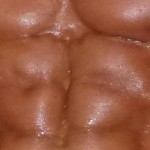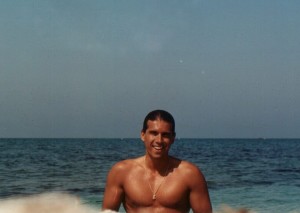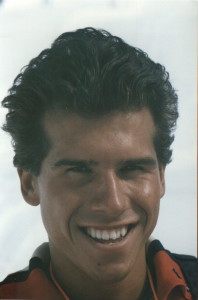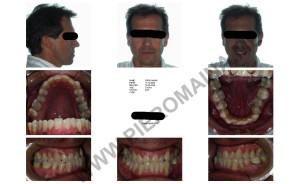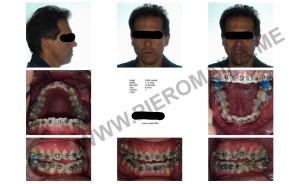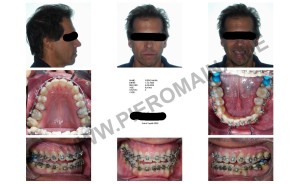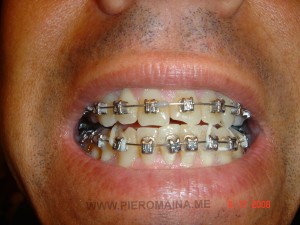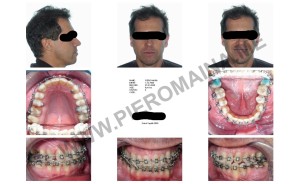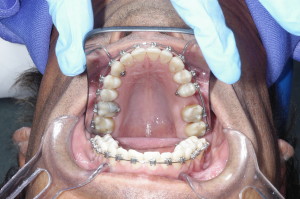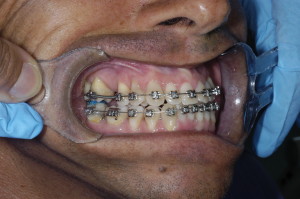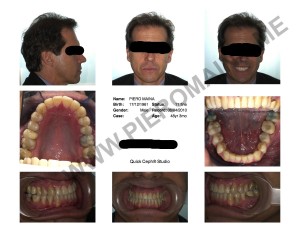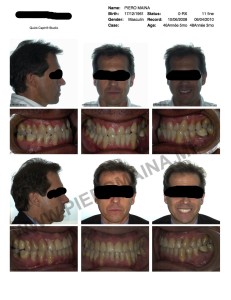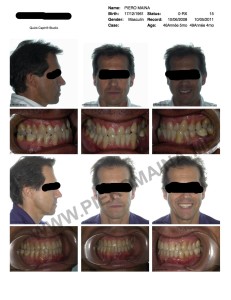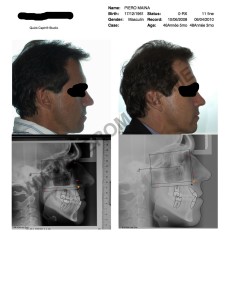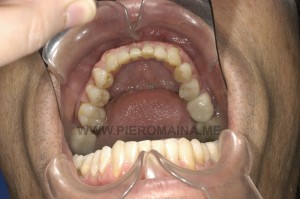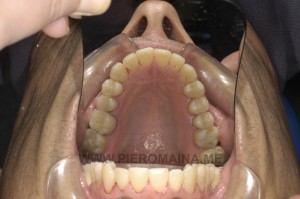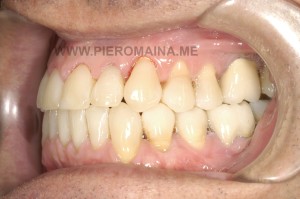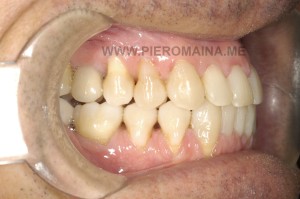Title:Protein Supplements Vs. Protein Foods
By line: By Tom Venuto, NSCA-CPT, CSCS
URL: www.BurnTheFat.com
Word count: 2455 words
Protein Supplements Vs. Protein Foods? By Tom Venuto, NSCA-CPT, CSCS www.BurnTheFat.com
Are protein supplements really better than protein foods? Before attempting to answer this question, I should first preface it by mentioning that I do not sell supplements, nor am I associated with any supplement company, so you’re getting an honest and unbiased opinion. Don’t get me wrong; I am not anti-supplement by any means. It would simply be more accurate to say that I am “pro-food.” There are a lot of good supplements on the market, and I’ve used many of them, including a multi vitamin, creatine and essential fatty acid (EFA) supplements such as Flaxseed oil. Protein powders and meal replacements can also be indispensable if you don’t have time to eat every three hours. However, protein supplements are not the master key to your success, real food is!
Did you ever notice how articles about protein in certain bodybuilding magazines are seldom objective? Instead, they all seem to be slanted towards hyping some “revolutionary” new product. Did you ever wonder why? In my opinion, most articles on protein supplements are nothing more than thinly disguised advertisements (some very thinly). Sometimes they give you a very persuasive-sounding argument, replete with dozens of references from scientific studies (mostly done on rodents, of course). They even give you an 800 number at the end of the article to order. (How convenient!)
When protein manufacturers throw around fancy words like cross flow microfiltration, oligopeptides, ion-exchange, protein efficiency ratio, biological value, nitrogen retention and glycomacropeptides, it sure sounds convincing, especially when scores of scientific references are cited. But don’t forget that the supplement industry is big business and most magazines are the supplement industry. Lyle McDonald, author of “The Ketogenic Diet,” hit the nail on the head when he wrote “Unfortunately, the obsession that bodybuilders have with protein has made them susceptible to all kinds of marketing hype. Like most aspects of bodybuilding (and the supplement industry in general), the issue of protein is driven more by marketing hype than physiological reality and marketing types know how to push a bodybuilder’s button when it comes to protein “
Many nutrition “experts” (read: people who sell supplements), state that there are distinct advantages of protein supplements (powders and amino acid tablets) over whole foods. For example, they argue that whey, a by-product of the cheese-making process, is a higher quality protein than most whole food sources. There are many different methods of determining protein quality, including biological value (BV), protein efficiency ratio (PER), Net Protein Utilization (NPU), chemical score, and protein digestibility corrected amino acid score (PDCAAS). If you have ever seen advertisements for protein powders and supplements, you have undoubtedly heard of one or more of these measures of protein quality.
BV is one of the most commonly used and is arguably, the best measure of a protein’s quality. BV is based on how much of the protein consumed is actually absorbed and utilized by the body. The higher the amount of protein (nitrogen) that is actually retained, the greater the BV. If a protein has a BV of 100, it means that all of the protein absorbed has been utilized with none lost. Whole eggs score the highest of all foods with a BV of 100, while beans have a BV of only 49.
Protein quality is certainly an important issue, but it is one that has been enormously overstated and even distorted for marketing purposes. Whey protein is truly an excellent protein with a biological value at or near 100. Many advertisements list whey as having a BV between 104 and 157, but if you look in any nutrition textbook it will tell you that it is impossible to have a BV over 100. In “Advanced Nutrition and Human Metabolism,” BV is defined as “a measure of nitrogen retained for growth and/or maintenance that is expressed as a percentage of nitrogen absorbed.”
When a protein supplement is listed as having a BV over 100, the company has intentionally manipulated the number for marketing purposes or unintentionally confused BV with another method of rating protein quality. Certain whey proponents claim that whey is “superior to whole egg” so the percentage sign on BV had to be dropped and the scale extended beyond 100. It was noted by bodybuilding writer Jerry Branium in IRONMAN magazine that in a study where the BV of whey was reported to be 157, the author confused BV with chemical score. Chemical score is a comparison of the amino acid pattern in an ideal reference protein to a test protein and therefore the number can exceed 100. 157 was actually the chemical score and not the BV.
Most bodybuilders and strength athletes already consume more than enough protein (an understatement if there ever was one), so the importance of BV to these athletes who are already consuming copious amounts of protein has been overplayed. Even though whey has a higher BV than chicken breast, fish or milk protein, if the total quantity of protein you consume is sufficient, then it is not likely that substituting whey for food proteins will result in any additional muscle growth.
Whether you choose a whole protein food or a protein supplement isn’t as important as some would like you to believe. For the purposes of developing muscle, the only guidelines for protein that you must follow are: (1) consume a source of complete protein with every meal, (2) eat at frequent intervals approximately three hours apart (about six times per day) and (3) consume a minimum of .8 grams to 1 gram per pound of body weight. There are times when it would be beneficial to consume more than one gram per pound of body weight, but that will have to be the subject of another article.
Because whey protein does have a high BV, it probably offers the most benefits when you are dieting on very low calories. When your energy intake and correspondingly, your protein intake, are reduced, whey protein could help you get greater utilzation of the smaller amount of protein that you are taking in. In other words, choosing proteins of the highest quality is more of an issue when you are dieting than when you are focusing on mass gains when total calories and protein are being consumed in abundant amounts. Whey protein also provides a way to get high quality protein without the fat, which is also important when dieting.
It has been suggested that whey may have other advantages besides high protein quality, although they are frequently overstated. These benefits include enhanced immunity, increased antioxidant activity and quick absorption. Several studies in “Clinical and Investigative Science” by Dr. Gerard Bounous of Montreal have shown that whey protein provides anti carcinogenic properties, protection from infections, and other enhanced immune responses. Whey protein was also been shown to raise levels of Glutathione, an important antioxidant that can offer protection from free radical oxidative damage. While such findings are very promising, all these studies, which are frequently quoted in whey protein advertisements, were performed on mice, so it is unclear how well the results extrapolate to humans.
Another acknowledged benefit of whey protein is its fast absorption rate. Although there isn’t any evidence that protein supplements digest more efficiently than whole foods (as is often claimed), they are definitely digested faster. This is most important after a training session when the rates of protein synthesis and glycogen re-synthesis are increased. This is the reason it is often recommended that a liquid meal containing protein and a high glycemic carbohydrate be consumed immediately post-workout and that whey is the ideal protein for this purpose. Even in considering post-workout nutrition, there is still little proof that a liquid protein-carb complex will actually produce better muscular growth than whole foods, as long as complete whole food protein foods and complex carbohydrates are consumed immediately after the training session and every three waking hours for a period of 24 hours thereafter.
Speaking of protein absorption rates, the discussion of fast acting versus slow acting proteins seems to be the latest hot topic these days in bodybuilding circles. The interest was sparked by studies in 1997 and 1998 that examined the differences between the absorption rates of whey versus casein. The researchers concluded that whey was a fast acting protein and was considered to be more “anabolic” while casein was slower acting and was considered to be more “anti-catabolic. ” It was further hypothesized that consuming a combination of these two types of proteins could lead to greater muscle growth. These findings have prompted the supplement companies to market an entirely new category of protein supplements; casein and whey mixes. The problem with drawing such conclusions so quickly is that these studies looked at the speed of whey and casein absorption in subjects who had fasted for 10 hours before being fed the protein. Any suppositions drawn from this information are probably irrelevant if you are eating mixed whole food meals every three hours. Obviously, more research is needed.
This recent fascination with various rates of protein absorption could be compared to the interest in the glycemic index. The glycemic index is a scale that measures the rate at which the body converts various carbohydrate foods into blood glucose. The higher the glycemic index, the faster the food is converted to glucose and the larger the insulin response. Therefore it is said that high glycemic foods should be avoided in favor of low glycemic index foods. The error in relying solely on the glycemic index as your only criteria for choosing carbohydrates is that the index is based on consuming a carbohydrate food by itself in a fasted state.
When carbohydrates are consumed in mixed meals that contain protein and a little fat, the glycemic index loses some of its significance because the protein and fat slow the absorption of the carbohydrate. That’s why the glycemic index is really much ado about nothing and the same could probably be said for the casein and whey argument. It’s just the latest in a long string of new angles that supplement companies use to promote their protein: free-form vs peptides, concentrate vs isolate, ion exchange vs microfiltration, soy vs whey, casein and whey mix vs pure whey and so on. Every year, you can count on some new twist on the protein story to appear. Certainly there are going to be advances in nutrition science, but all too often these “new discoveries” amount to nothing more than marketing hype.
What about amino acid pills? Amino acids pills are simply predigested protein. Proponents of amino acid supplementation claim that because the amino’s are predigested, the body will absorb them better, leading to greater improvements in strength and muscle mass. It sounds logical, but this is a gross underestimation of the body’s capacities and actually the reverse is true: The human digestive system was designed to efficiently process whole foods; it was not designed to digest pills and powders all day long. Amino’s are absorbed more rapidly in the intestine when they are in the more complex di and tri-peptide molecules.
Your body gets better use of the aminos as protein foods are broken down and the amino’s are absorbed at just the right rate for your body’s needs. In “Exercise Physiology; Energy Nutrition and Human Performance,” authors Katch and McArdle state that “Amino acid supplementation in any form has not been shown by adequate experimental design and methodology to increase muscle mass or significantly improve muscular strength, power, or endurance.”
Furthermore, consuming predigested protein when you are seeking fat loss is not necessarily advantageous because it shortchanges you of the thermic effects of real food. Whole foods have a major advantage over protein supplements; they stimulate the metabolism more. This is known as the “thermic effect of food.” Protein has the highest thermic effect of any food. Including a whole protein food with every meal can speed up your metabolic rate as much as 30% because of the energy necessary to digest, process, and absorb it. This means that out of 100 calories of a protein food such as chicken breast, the net amount of calories left over after processing it is 70. In this respect, the fact that protein foods digest slower than amino acid tablets is actually an advantage.
A final argument against amino acid supplements is the cost. Amino’s are simply not cost effective. If you don’t believe it, pick up a bottle and do the math yourself. One popular brand of “free form and peptide bonded amino acids” contains 150 1000mg. tablets per bottle and costs $19.95. 1000 mg. of amino acids equals 1 gram of protein, so the entire bottle contains 150 grams of protein. $19.95 divided by 150 grams is 13.3 cents per gram. Let’s compare that to chicken breast. I can buy chicken breast from my local supermarket for $2.99 a pound. According to Corinne Netzer’s “Complete Book of Food Counts,” there are 8.8 grams of protein in each ounce of chicken, so one pound of chicken (16 oz) has about 140 grams of protein. $2.99 divided by 140 grams equals 2.1 cents per gram. The amino acids cost more than six times what the chicken breast does! I don’t know about you, but I’ll stick with the chicken breast.
The biggest advantage of protein supplements is not that they can build more muscle than chicken or egg whites or any other whole food protein, the biggest advantage is convenience. It is easier to drink a protein shake than it is to buy, prepare, cook and eat poultry, fish or egg whites. Consuming small, frequent meals is the optimal way to eat, regardless of whether your goal is fat loss or muscle gain. To keep your body constantly in positive nitrogen balance, you must consume a complete protein every three hours. For many people, eating this often is nearly impossible. That’s when a high quality protein supplement is the most helpful.
Aside from convenience, the truth about protein supplements is that they offer few advantages over protein foods. There is no scientific evidence that you can’t meet all of your protein needs for muscle growth through food. As long as you eat every three hours and you eat a complete protein such as eggs, lean meat or lowfat dairy products with every meal, it is not necessary to consume any protein supplements to get outstanding results. Whey protein does have some interesting and useful properties and supplementing with a couple scoops each day is not a bad idea, especially if you are on a low calorie diet for fat loss or when you’re using a post workout shake instead of a meal. Aside from that, focus on real food and don’t believe the hype.
References
1) Groff, James, et al, Advanced Nutrition and Human Metabolism, West Publishing company, 1995.
2) Fruhbeck, Gema. Slow and fast dietary proteins. Nature, 391: 843-844
3) Boirie, Y. et al. Slow and fast dietary proteins differently modulate postprandial protein accretion. Proc National Acad Sci, 94: 14930-14935, 1997
4) Lemon, Peter, Protein and Exercise: update, Medicine and Science in Sports and Exercise, Vol 19, No. 5, S179 – S190, 1987
5) Carraro, F., et at, Effect of exercise and recovery on muscle protein synthesis in human subjects. Amer Journal of physiology, 259: E470, 1990
6) Lemon, Peter, Is increased dietary protein necessary or beneficial for individuals with a physically active lifestyle? Nutrition reviews, 54:S 169-175, 1996
7)Bounous, G., et al, The immunoenhancing property of dietary whey protein concentrate. Clinical and Investigational Medicine, 11: 271-278. 1988.
8) Sadler, R., The benefits of dietary whey protein concentrate on the immune response and health. S Afr. J Dairy Sci, 24: No 24, 1992
9) Bounous, G., Dietary whey protein inhibits the development of dimethylhydrazine-induced malignancy. Clinical and Investigational Medicine, 12: 213-217, 1988
10) Bounous, G., et al, The biological activity of undenatured dietary whey protein; role of glutathione. Clinical and Investigational Medicine, 14: 4, 296-309, 1991
11) Netzer, Corinne. The Complete Book of Food Counts. Dell Publishing, 1997
12) Katch, Katch & McArdle, Exercise Physiology; Energy, Nutrition and Human Performance, Wiliams and Wilkins, 1996.
About the Author:
Tom Venuto is a natural bodybuilder and author of the #1 best selling e-book, “Burn the
Fat, Feed The Muscle,” which teaches you how to burn
fat without drugs or supplements using the little-known
secrets of the world’s best bodybuilders and fitness
models. Learn how to get rid of stubborn fat and turbo-
charge your metabolism by visiting:








